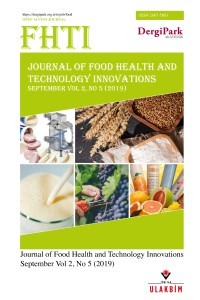Öz
Objective :
The composition and food value of buttermilk are essentially the same as those of skim milk. The fat content is higher in case of buttermilk. It supplies protein, riboflavin and calcium in the highest amount. It contains a large proportion of the protein mixture slouched from the fat globule- milk serum interface by churning. Churning 1 kilogram of cream will typically yield 0.5 kilogram of butter and 0.5 kilogram of buttermilk. Liquid buttermilk is prone to oxidation, so this product is concentrated by evaporation and then sprays dried in order to extend the shelf life. Currently, dried buttermilk is mainly used for animal feeding (swine, bovine), but also used in the
food industry for its emulsion properties and its positive impacts on the texture and taste of products.
Conclusion :
In this study, it was aimed to determine the content of minerals buttermilk that uses the traditional method in the dairy plants. Calcium, potassium, phosphorus, sodium and magnesium quantities were determined by simultaneous inductively coupled plasma optical emission spectrometry (ICP-OES). In the butter milk, the
concentration of Ca was 8476,94 mg/L; Mg, 526 7 mg/L; K, 1920 mg/L; Na, 6095,309 mg/L; and P, 7170,496 ± 23 mg/L.
Anahtar Kelimeler
Kaynakça
- Boudreau A., St-Amant L. 1984. Beurre. Sciences et technologie du lait, pp 213-240.
Öz
Kaynakça
- Boudreau A., St-Amant L. 1984. Beurre. Sciences et technologie du lait, pp 213-240.
Ayrıntılar
| Birincil Dil | İngilizce |
|---|---|
| Konular | Gıda Mühendisliği |
| Bölüm | Food Health and Technology Innovations |
| Yazarlar | |
| Yayımlanma Tarihi | 30 Eylül 2019 |
| Yayımlandığı Sayı | Yıl 2019 Cilt: 2 Sayı: 5 |


